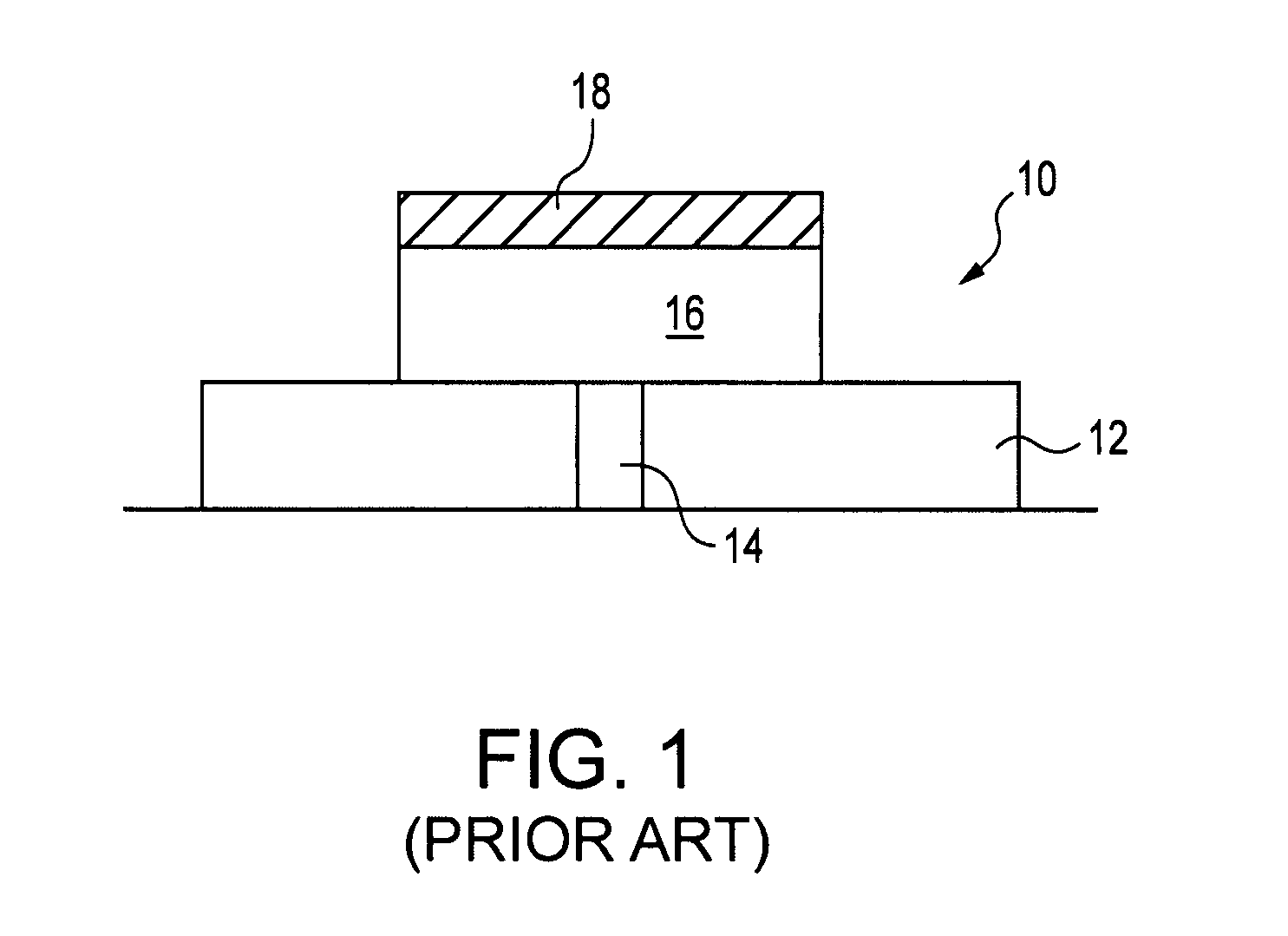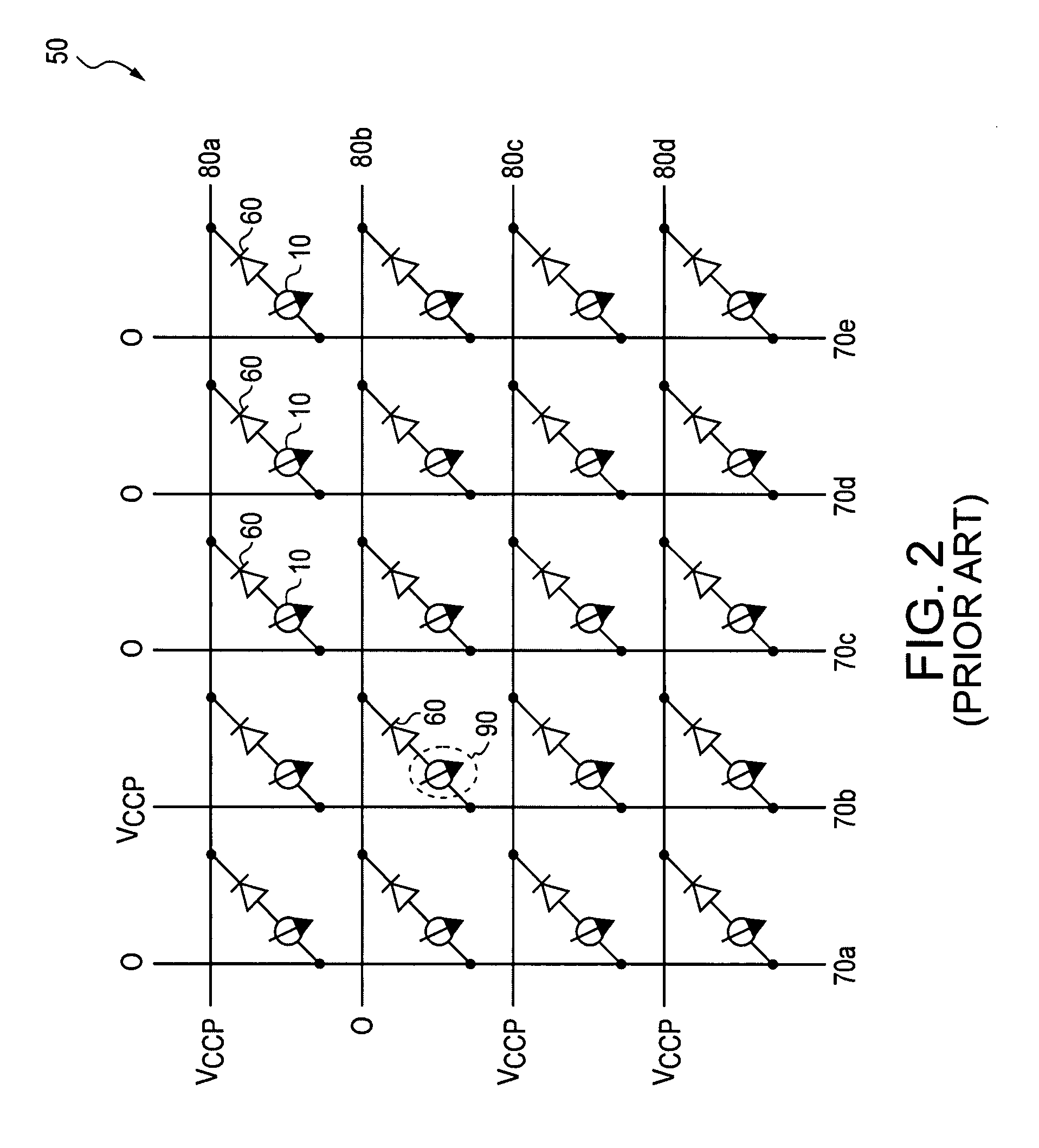Circuit, biasing scheme and fabrication method for diode accesed cross-point resistive memory array
a resistive memory array and diode access technology, applied in semiconductor devices, digital storage, instruments, etc., can solve the problems of large power consumption, devices unsuitable for portable devices or as substitutes for frequently-accessed volatile memory devices, and significant power consumption
- Summary
- Abstract
- Description
- Claims
- Application Information
AI Technical Summary
Problems solved by technology
Method used
Image
Examples
Embodiment Construction
[0020]In order to, for example, reduce standby power consumption and / or operational delays in a diode accessed cross-point resistive memory array, back-to-back Zener diodes may be used instead of the single diode used in the prior art. A Zener diode has a current-voltage (i.e., I-V) chart 102 as shown in FIG. 3. In the I-V chart 102, current is represented on the vertical axis. Voltage is represented on the horizontal axis. When a Zener diode is positively biased (i.e., when the voltage is positive in the I-V chart 102), a Zener diode acts like a typical bipolar diode. However, when a Zener diode is reverse biased (i.e., the applied voltage is negative in the I-V chart 102), very little leakage current flows and the Zener diode acts effectively as an open circuit as long as the magnitude of the reverse bias is less than the Zener voltage VZ. When the reverse bias is increased to the Zener voltage VZ, the Zener diode breaks down and a dramatic increase in current occurs. The increase...
PUM
 Login to view more
Login to view more Abstract
Description
Claims
Application Information
 Login to view more
Login to view more - R&D Engineer
- R&D Manager
- IP Professional
- Industry Leading Data Capabilities
- Powerful AI technology
- Patent DNA Extraction
Browse by: Latest US Patents, China's latest patents, Technical Efficacy Thesaurus, Application Domain, Technology Topic.
© 2024 PatSnap. All rights reserved.Legal|Privacy policy|Modern Slavery Act Transparency Statement|Sitemap



